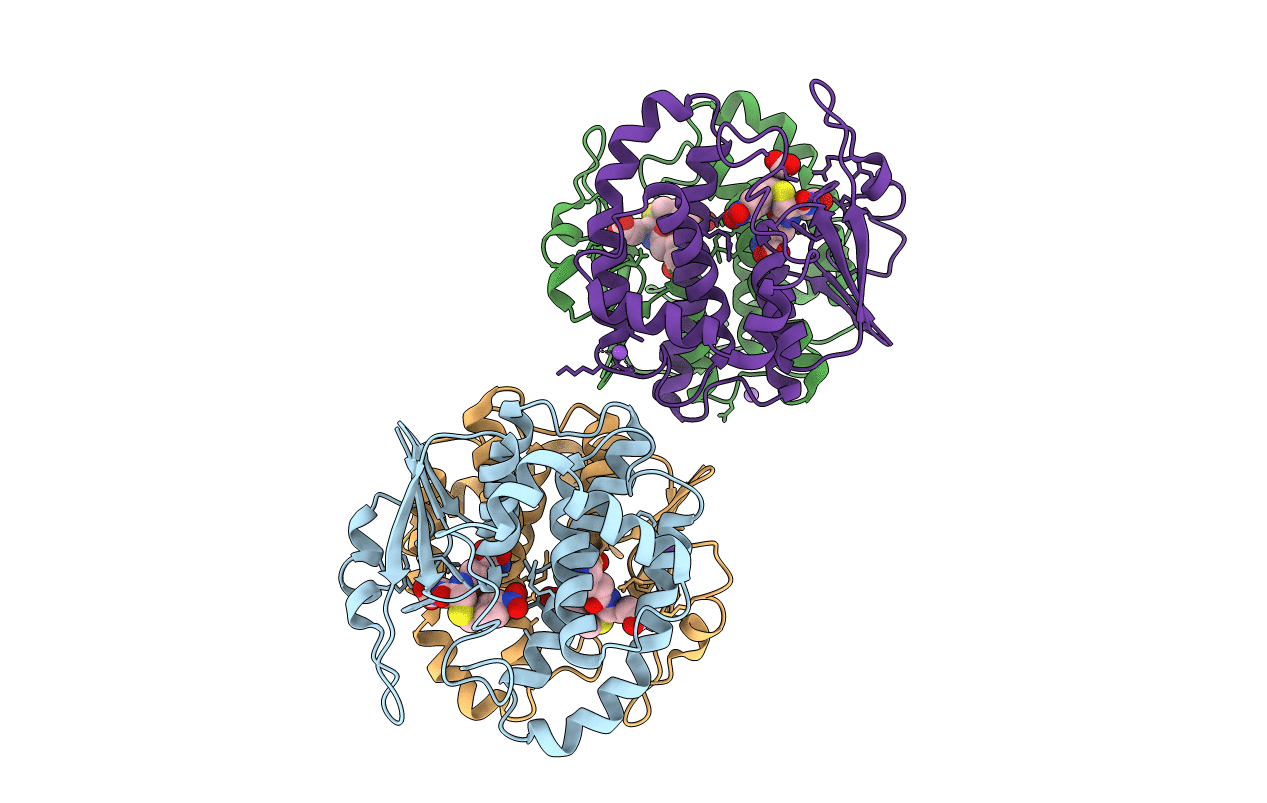
Deposition Date
2021-06-02
Release Date
2022-02-16
Last Version Date
2024-10-23
Entry Detail
PDB ID:
7OPY
Keywords:
Title:
Camel GSTM1-1 in complex with S-(p-nitrobenzyl)glutathione
Biological Source:
Source Organism:
Camelus dromedarius (Taxon ID: 9838)
Host Organism:
Method Details:
Experimental Method:
Resolution:
2.05 Å
R-Value Free:
0.25
R-Value Work:
0.19
R-Value Observed:
0.19
Space Group:
P 1 21 1


